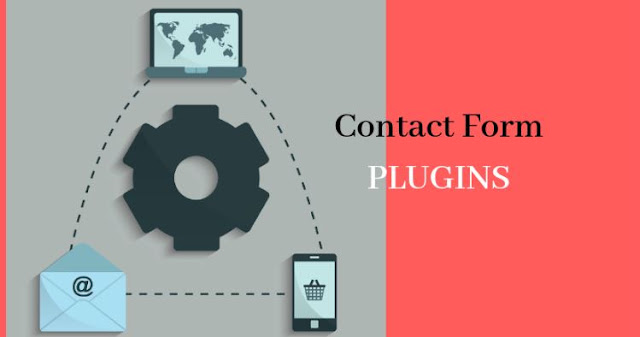It’s easy to see that the plus-size industry has been making progress over the past decade or so. Whether it’s high street retailers stocking their own plus size ranges or specialist plus- size only stores popping up, it seems as though companies have finally started to take notice of the market.
We’ve teamed up with River Island to assess the current impact of the UK plus-size industry and make some predictions for the future of plus-size in the market.
The UK Plus-Size Market
Fashion retailers in the UK tend to be separated into two distinct categories: plus-size specialist stores (serving strictly plus-size items) and more general plus-size brands (brands which have extended their current size range to include plus-size). As of 2017, the plus-size market was worth approximately £6.6 billion, according to a PwC report, and £4.7 billion of this was for female plus-size clothing only.
When we compare the performance of plus-size with standard womenswear and menswear, we begin to see some interesting trends emerging. Reportedly, the plus-size market had a compound annual growth rate (CAGR) of 3.3% during the 2012 and 2017 period, while the men’s and women’s clothing sector grew just 2.4% in the same timeframe. What’s more, the value of the plus-size industry is anticipated to develop at a 7.1% CAGR from now until 2022 and potentially hit a value of £1.3 billion by 2019 — but why and what trends can we expect to emerge as a result?
How Is The Plus-Size Market Developing?
There are several contributing factors which have led to the success of plus-size in the UK, from successful advertising campaigns, to the social media influencers who have brought the sector into the mainstream.
The Rise Of #Body Positive
The body positive movement has been instrumental in helping the growth of the plus-size industry.
Donatella Versace, vice president and artistic director, Versace Group, said: “Plus-sized women shouldn’t think of themselves as a size. They should think of themselves as women with rich goals in life." Comments like these from powerful people in the industry have supported the plus-size market, making it more attractive to not only buy into from a consumer perspective, but invest in from a brand point of view.
Additionally, major fashion brands have begun to vary their models at catwalk shows, including plus-size models on the catwalk. In September last year, audiences at London Fashion Week saw female models up to a size 26 take to the catwalk — including the notably outspoken plus-size models, Tess Holliday and Callie Thorpe. Similarly, the New York Designers Spring-Summer 2018 Show also sent plus-size models down the runway — although, only two out of a cast of around 70. Despite a rise in the inclusion of plus-size models at major fashion events in the past few years, the number has disappointingly fallen in the most recent fashion shows, according to The Fashion Spot report — only 30 plus-size models took part in each of the four major cities (Milan, Paris, London, and New York).
Credit should therefore be given to the models themselves, as well as the brands and show organisers that they work with. Recently, the world has seen a surge in plus-size influencers and models which may have been a greater assistance to the growth of the sector. For example, on Instagram, US plus-size models Ashley Graham and Tess Holliday have 7.2 million and 1.6 million followers respectively, while Brits, Callie Thorpe and Felicity Hayward, have 196,000 and 192,000.
With their social media followers reaching into the hundreds of thousands and their fight to prevent ‘body shaming’, the efforts of plus-size models and influencers to gain acceptance in both the industry and society have been key factors behind the rise of plus-size. In fact, global mentions of the hashtags on social media sites: #BodyPositive, #LoveYourBody and #BodyConfidence all increased between August 2015 and August 2017. Evidently, prestigious fashion shows need to take notice and feature more plus-size runways and models if they are to positively react to the growing support for the plus-size industry.
Technology And Plus-Size
E-commerce has also played a significant role in bringing plus-size fashion to the mainstream. Whether it’s plus-size dresses or plus-size bikinis, plus-size consumers prefer to do their shopping online.
In 2017, consumers in the UK spent over £16 billion buying clothing and accessories online. On a global scale, this figure is expected to exceed $712 billion by 2022. Clearly, digital platforms are crucial in the industry — but how is technology affecting the plus-size sector specifically?
Brands in the UK have been proactive in engaging with their target audience over online platforms like Twitter and Instagram.
What’s more, development in fashion ecommerce sites and online channels have also helped to grow sales in the sector to a greater extent than if there was less online availability for purchasing plus-size clothing.
As brands continue to increase their offerings to cater for the plus-size market, they will improve their technology to streamline the customer journey. For example, many brands are currently investing in virtual stylists, body scanners and online fitting rooms — all of which create an interactive and enjoyable experience for plus-size customers that will help bring this specific sector of fashion onto a more even playing field with the overall womenswear market.
The Digital Influence
Everyday users of Facebook and Instagram will be aware of the increase in social media advertising over the past few years; marketing campaigns by plus-size brands have made plus-size fashion more visible and accessible for the average online user. Instagram Shop is making it easier to buy online without having to visit a store site, while many plus-size retailers are capitalising on the almost 40 million UK Facebook users by channelling their marketing efforts onto this platform.
Brands are aware of the effectiveness of social media advertising on younger demographics. According to a study into social media use by age in the UK, reported by eMarketer:
- 59% of Instagram users & 75% of Facebook users are age 16-22. - 38% of Instagram users & 80% of Facebook users are age 23-34. - 16% of Instagram users & 69% of Facebook users are age 35-49. - 9% of Instagram users & 58% of Facebook users are age 50-65.
Evidently, the two most popular social media platforms are used far more by younger demographics, which could potentially be why specialist brand marketing campaigns have been so widespread here.
With more popular high-street brands stocking plus-size options and a rise in social media coverage of the fashion sector, the plus-size market is able to target a more youthful audience and expand its reach.
Predictions For The Future – Where Is Plus-Size Headed?
Data sourced from Google Trends shows that the number of Google searches for ‘plus size’ hit an all-time high in June 2018 and continues to rise year-on-year. So, if this trend continues, what’s next for plus-size fashion?
IBIS World has stated that the growing base of plus-size consumers and the rise in plus-size fashion retailers will help the market to develop over the next few years. So much so, that the sector is expected to be an important contributor as a growth market to the wider economy in the next few years. Essentially, IBISWorld believes that the establishment of plus-size brands and a greater relationship to significant markets will be two key factors in the expansion and future success of the plus-size women’s clothing industry.
With fashion brands taking steps to improve their user experience by introducing better digital technology, we will likely see increased customer satisfaction when it comes to plus-size consumers and the online shopping journey. Furthermore, key plus-size influencers will continue to gain authority by campaigning for plus-size inclusivity and acceptance into the world of mainstream fashion. With the news that global fashion shows are falling behind when it comes to the exposure of plus-size models on the runway, organisers may react positively and include more of these models in future events, too.
On a similar note, brands will become increasingly aware of the financial benefits of extending their current offerings to include plus-size. It’s fair to anticipate even more luxury and high-street brands channelling investment and resources into creating plus-size departments to complement their current ranges. Overall, the future looks bright for plus-size women’s fashion and we should expect more innovations and developments as the industry gains momentum over the next few years.
I hope you enjoyed this blog post about the growth of the plus-sized fashion industry for retail stores and ecommerce shops in the UK.
Interested in more articles about retail marketing and ecommerce?
Read Related Resources:
• Ecommerce Technology To Help Build Your Online Store
• How To Improve Retail Sales With Marketing & Merchandising
More Bootstrap Business Blog Below




